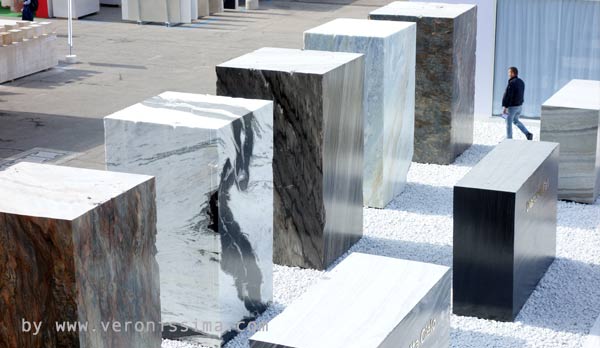Verona Marble
Verona represents one of the most important industrial districts in Italy for the processing of marble, granite and stone.
Stone quarrying and processing in Verona dates back to prehistoric times and developed greatly in Roman age when great monuments such as the Gavi Arch and the Arena were built.
Today between the towns of Sant'Ambrogio di Valpolicella, Affi and Cavaion there are hundreds of companies that work local and imported stones with the most modern technologies.
At the end of September Verona hosts Marmomac, the most important fair in the world for marble and machinery for its processing.
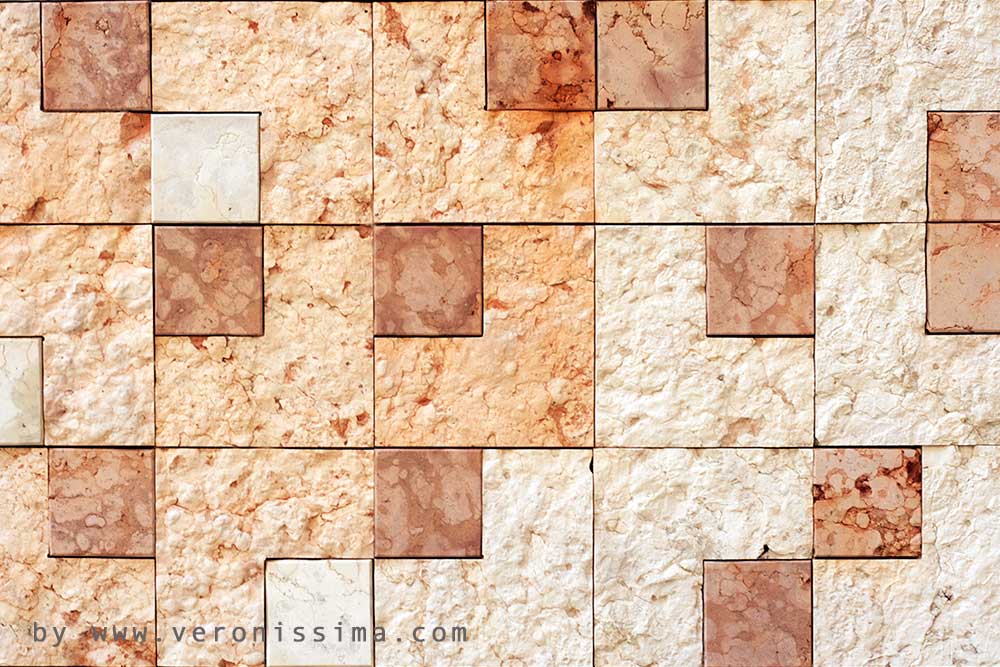
Architect Carlo Scarpa's homage to the marble of Verona in the "apsidiole" next to the entrance to the Castelvecchio Museum. All the shades of color of Lessinia stone are represented in a puzzle of squares.
As tourist guides of Verona we offer many guided tours to learn about the long and complex tradition of stone processing, both in the city and in the province.
We can help you getting into contact with marble processing companies in Verona territory and develop business relationship with a series of services:
- Provides information and researches on company of Verona marble district.
- Assists trade missions and participation to Marmomacc marble international exhibition.
- Provides language services, translations, interpreters, etc.
For further information:
+39 333 2199 645 info@veronissima.com P.I. 03616420232 C.F. CPPMHL74L13L781C
As tour guides we propose thematic itineraries to discover the marble and stone tradition of Verona. Our tours are suitable for enthusiasts and curious people or for professionals such as architects, interior designers, artists who want to explore a fascinating theme or are looking for contacts and inspirations for their projects.
Itinerary 1 - Verona Made of Marble
“Maromorina” (made of marble), this is how the city was once called, for the abundance and beauty of buildings and monuments made of stone. Our tour is a journey through the various types of stone in Verona, the styles and their use over centuries. From monumental Roman and medieval public buildings to the more modern works of architects such as Carlo Scarpa.
An itinerary that winds its way through the city that represents a true open-air museum of stone.
Itinerary 2 – Verona Marble History
An itinerary in Valpolicella and Lessinia mountain region to visit the ancient marble the monumental galleries of old qwarries, the archaeological sites of Paleovenetian and Arusnati villages made up of "stone huts", the modern houses that still use limestone slab as roofs, the industrial districts of the Verona area to discover the most modern technologies for stone processing.
Itinerary 3 – Industrial Districts and Technology
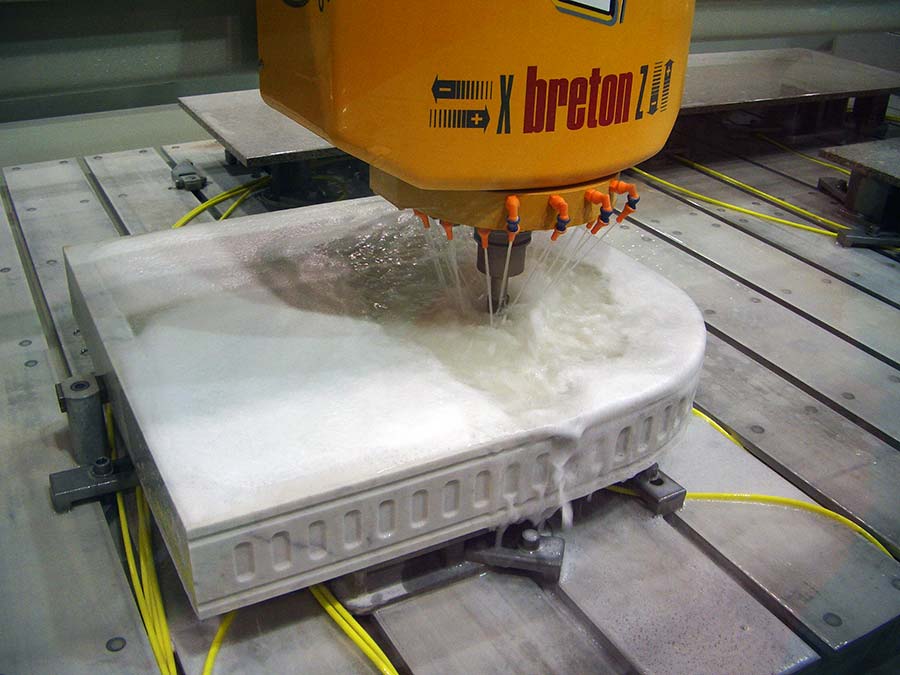
Discover one of the most important industrial districts of Italy, where granite and marble are worked to embellish the surfaces of hotels of Dubai or the halls of skyscrapers of New York. Visit the expanses of gigantic blocks of raw stone waiting to be worked. You will be amazed by the elegant showrooms where, instead of fashionable clothing, slabs of natural stone with fascinating colors and veining are displayed. Discover how the most modern robotic technologies allow to work the hard stone in the most elaborate and complex shapes.
Marmomacc
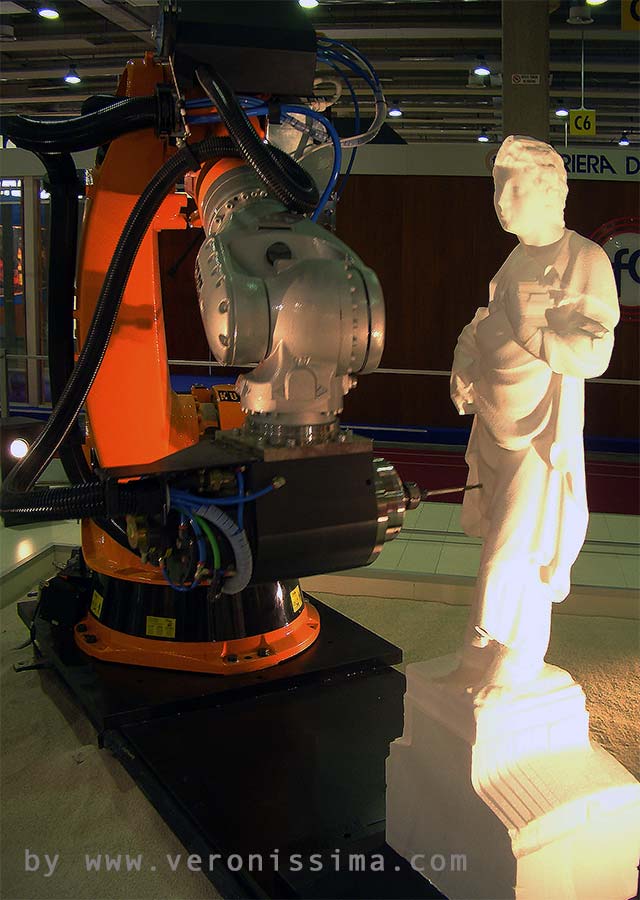
The great Michelangelo wouldn't have missed it.... Marbles, granites, stones from all over the world, in every color and size. Tools and machinery for working stone, from traditional chisels to the most recent advances in cutting-edge technology: lasers, sculpting robots, automated lines, diamond blades, abrasives and all kinds of products related to the stone industry. And then solutions for architecture, design and construction.
Marmomacc fair represents the global benchmark for the marble industry with exhibitors and visitors from all over the world.
In the vast exhibition area you can see many of the machines in operation.
If you want to know more
Are you in Verona for Marmomacc and want to visit Verona, or its province?
Are you an exhibitor at Marmomacc and want to offer a special day to your customers, linking the image of your business to a prestigious tradition thousands of years old?
Rely on the tour guides of Verona for a special half-day or full day.
Per maggiori informazioni:
+39 333 2199 645 info@veronissima.com P.I. 03616420232 C.F. CPPMHL74L13L781C
The History of Verona Marble
The formation
About 150 million years ago, northern Italy was the bottom of a tropical sea. Starting from the Jurassic period, over millions of years, the seabed sedimented in a calcareous layer hundreds of meters thick. Metamorphic phenomena transformed it into a hard rock in which the living beings that lived in that ancient sea were trapped: ammonites that can still be seen in abundance in the stone of the Veronese sidewalks, crabs, sea urchins and the extraordinary fossil fish of the Bolca quarry, famous throughout the world for the variety and clarity with which they have remained imprinted in the stone.
Infiltrations of various minerals occurred during the slow geological processes have given the stone of Verona that variety of shades of red and yellow and those veins so elegant that make it appreciated throughout the world.
Prehistoric Age
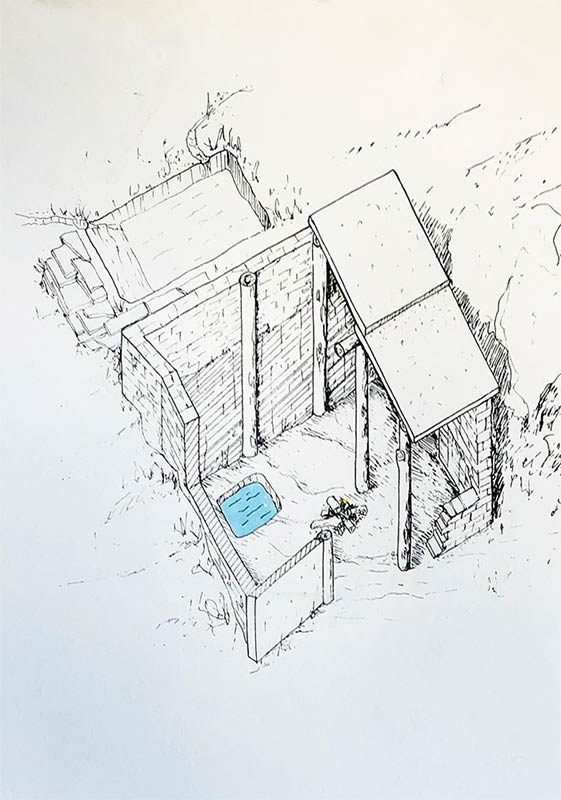
Often in the quarries of the Veronese mountains, due to the type of sedimentation, the stone is naturally divided into layers. In this way, slabs of a few centimeters of thickness ready for use can be extracted without great effort. They have been used since the Iron Age to build walls and roofs of simple dwellings dug into the rock. There are clear traces of them in the archaeological area of San Giorgio di Valpolicella.
Roman Age
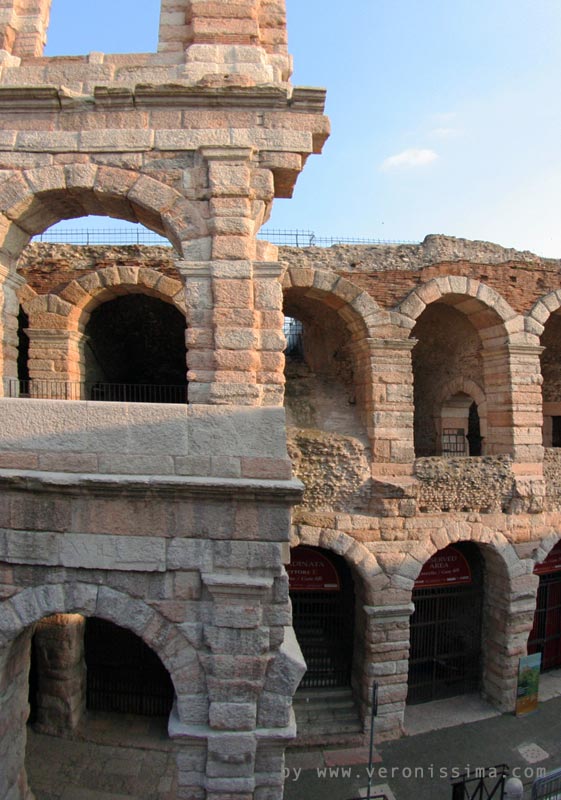
The great impulse to the extraction and processing of stone in Verona occurred in Roman times. A real mining industry was born, which provided the immense quantities of stone used in the construction of the imposing buildings of the city: the Gavi Arch, the monumental facades of the gates, the colonnades of the temples and, of course, the Arena of Verona, made entirely of large blocks of ammonitic red from the quarries of San Giorgio and Prun.
Middle Ages and Renaissance
Stone from Verona continued to be used in later periods. Ammonite red is found in all its shades of color in the city's Romanesque and Gothic basilicas, in the great monumental sarcophagi that became one of the city's stylistic features, such as the Arche Scaligere.
The Renaissance construction sites of the 1500s, with their great palaces, churches and monumental fortifications, also made abundant use of Verona marble, consolidating the technical and artistic skills that gave life to the Verona stone tradition.
Historical Quarries
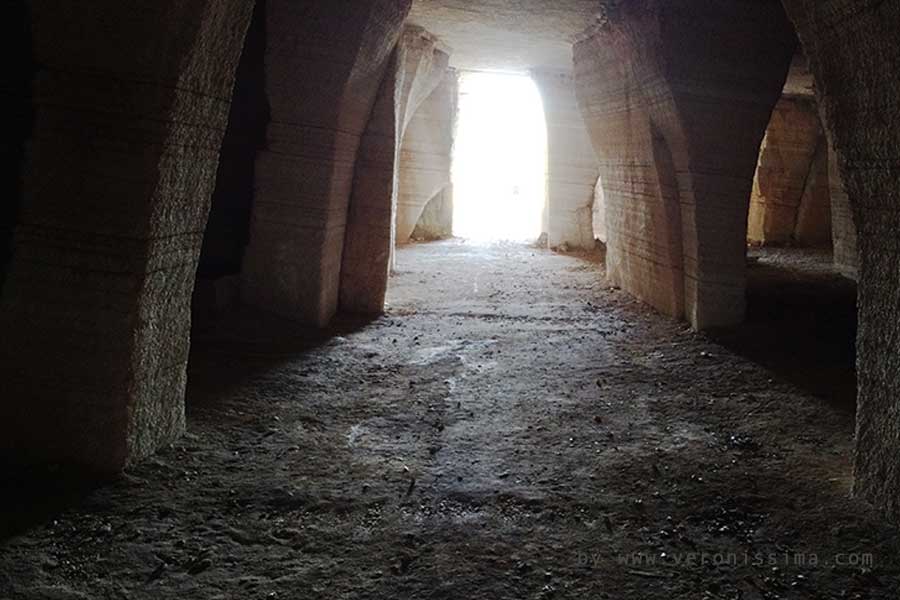
In the past, stone was extracted in tunnel quarries, proceeding from the top to the bottom. During the excavation process, part of the material was left behind, creating gigantic pillars to support the vaults. These suggestive quarries, similar to prehistoric cathedrals, are still visible.
For safety reasons, today the stone is extracted in open air quarries and processed in the numerous companies scattered throughout the Verona area between Valpolicella and Lake Garda.
For more information on guided tours of the historic quarries.
Verona Marble Today
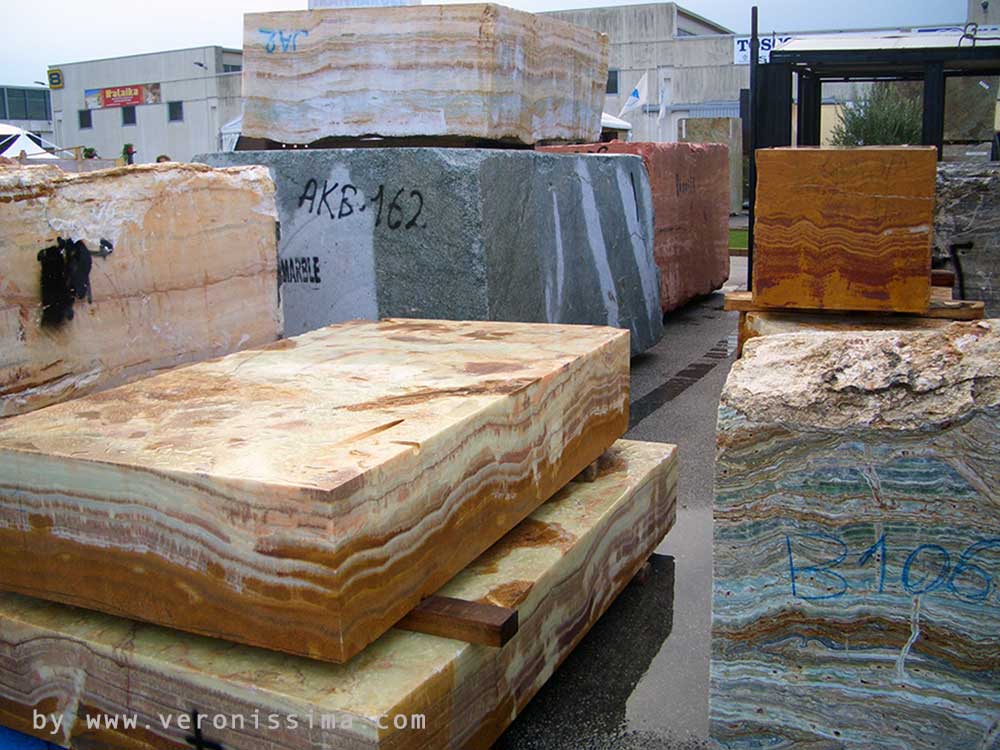
The marble and stone of Verona continue to be quarried and worked today, along with stone materials of all kinds that arrive from all over the world to be processed in Verona, and from here they leave to decorate the exteriors and interiors of the most prestigious buildings in every corner of the planet. The city itself, with its marble-paved streets and ancient palaces and churches, offers a showcase of what Veronese stone is and its processing possibilities.
Every year, in Verona, at the beginning of October, Marmomacc, the international fair of stones, marbles and technology for their processing, presents the state of the art of the sector at an international level.
Types of Marble
Red Verona
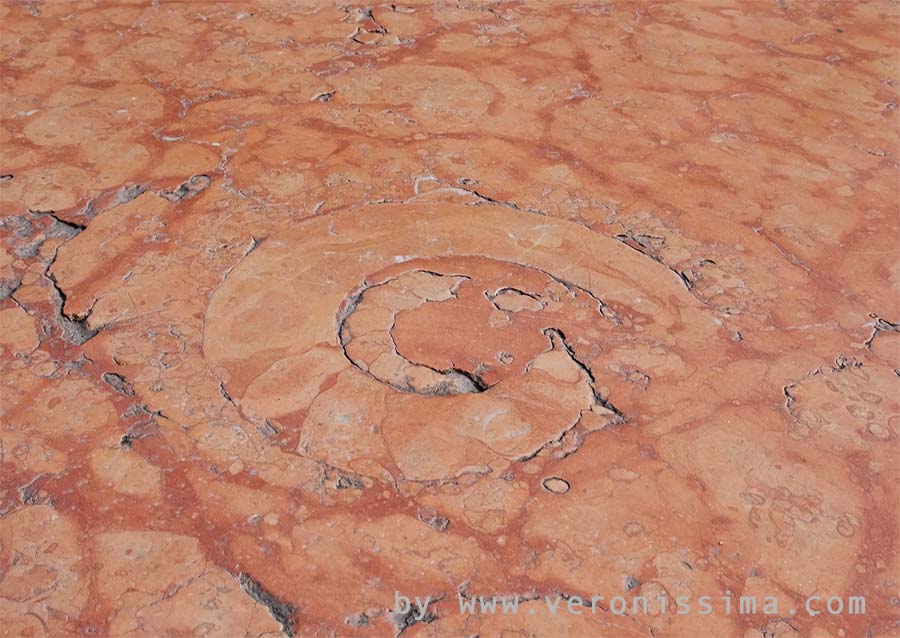
The most appreciated of the Veronese stones is certainly Rosso Ammonnitico, quarried mainly from Monte Pastello and on the mountains of the western side of the Val d'Adige between the towns of Sant'Ambrogio and Monte in Valpolicella. Its characteristic, in addition to its colors ranging from deep red to pale pink, are the fossil shells that are found there, of all sizes, in abundance. The name ammoniti, derives from the representations of Jupiter Ammon, a Roman divinity, represented with spiral horns. The Rosso Verona was appreciated and used since ancient times, modeled in columns, tiles, bas-reliefs and sculptures to decorate palaces and churches, not only in Verona but throughout Italy. It can be found on the facade of the Palazzo Ducale and in the Basilica of San Marco in Venice and in other medieval and Renaissance churches throughout Italy. It continues to be used today, much appreciated for its elegance by architects and designers. It is not difficult to recognize it, unmistakable, in coatings and details in the lobbies and entrances of hotels, luxury shopping malls and other architectural works around the world.
Nembro
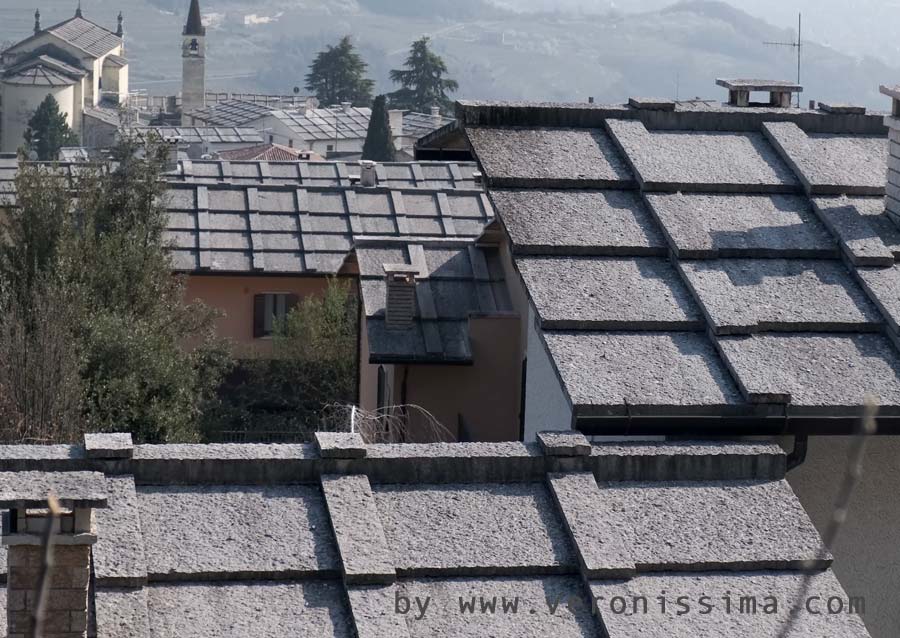
Among the limestones quarried in the Verona area there is Nembro di Verona, with tones ranging from pink to hazelnut to white, also known as Scaglia Rossa Veneta or Prun Stone. It can be found throughout the western sector of the Lessini mountains in layers separated by a veil of clay, which made it easy to extract and ready to use. Prun stone has been used since ancient times as a building material and it is not difficult to see it in overlapping layers as a roof covering for traditional houses on the mountains north of Verona. In the city the Valpolicella marbles were used in all their nuances since Roman times giving Verona that typical aspect and chromaticism that still characterizes the Verona Marmorina.
Biancone
As the name implies, it is the Veronese stone characterized by a very elegant milk-white color, sometimes tending to beige. It often has veins consisting of thin non-structural fractures that make it even more unique.
.
It has been used since ancient times in combination with the more intense red stone to create refined contrasts such as the floor of the church of San Zeno.
Other Stones
In addition to the famous Rosso Verona, the Veronese territory offers a wide variety of stones: Breccia Pernice, Rosa del Garda, Giallo Reale and different types of tuff, the latter widely used in the construction of portals, windows and sculptures for Renaissance and Baroque palaces in the center of Verona.
Per maggiori informazioni:
+39 333 2199 645 info@veronissima.com P.I. 03616420232 C.F. CPPMHL74L13L781C

 IT
IT 日本
日本 DE
DE FR
FR 中文
中文 ES
ES